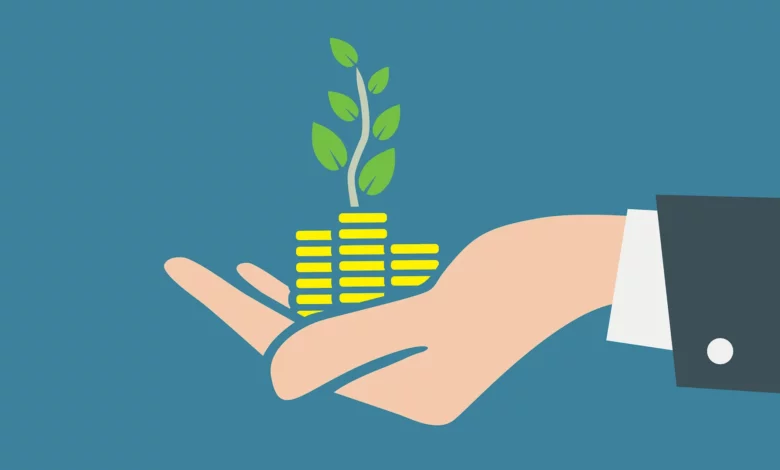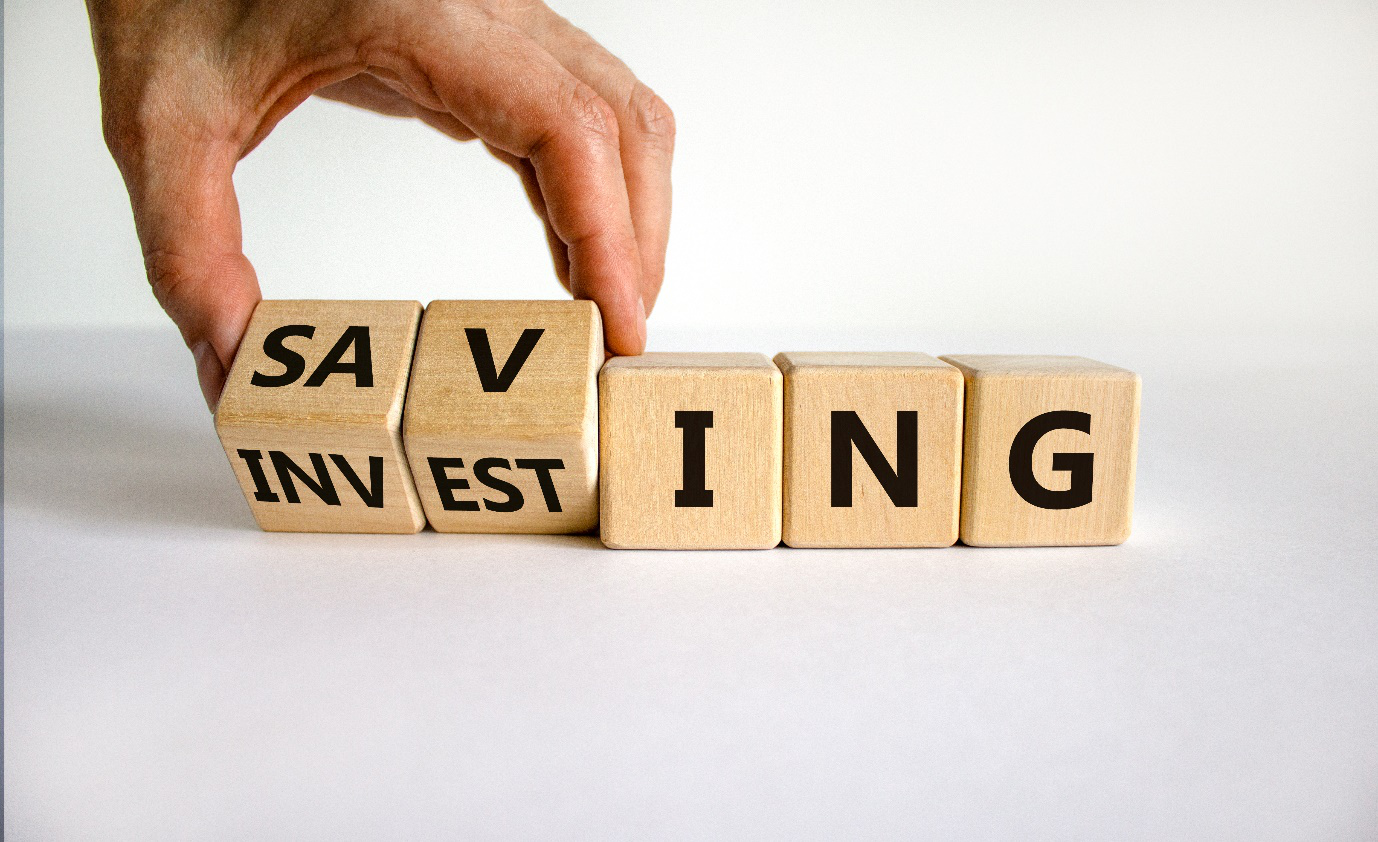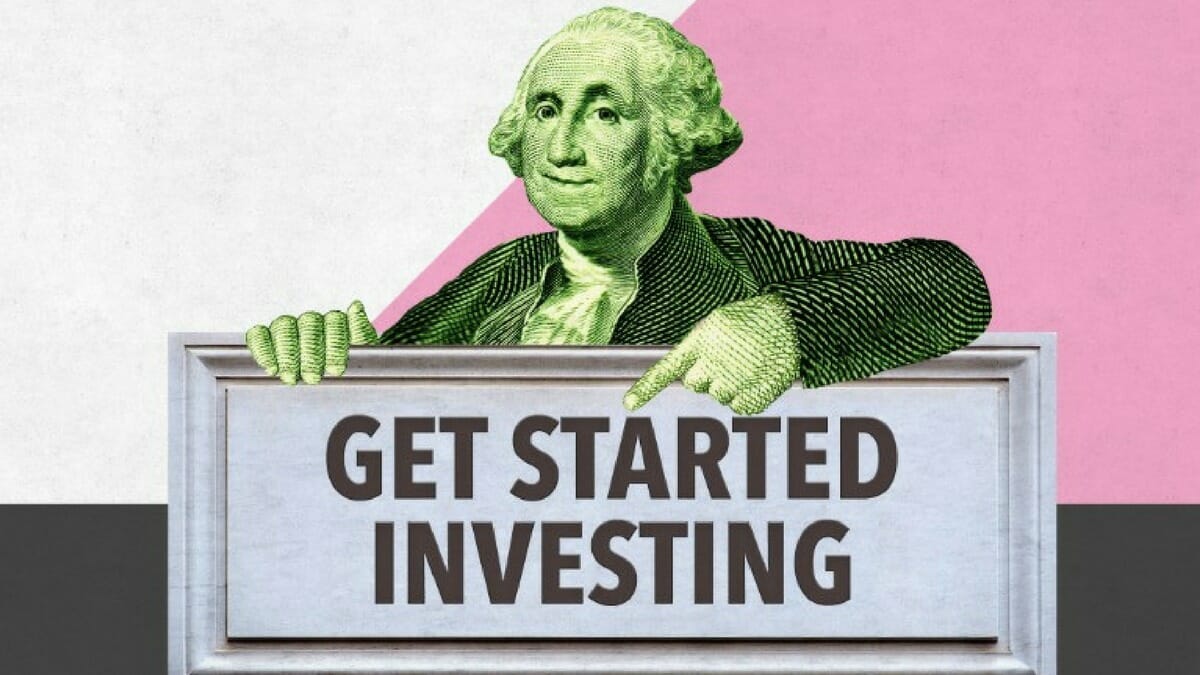What is the best age to begin investing and stock trading? How to invest in different ages?

If you’re wondering whether it’s too early or too late to start investing in mutual funds, rest assured that the best time to start is when you decide to do so. However, the sooner you begin investing, the better because mutual funds help you build wealth over time by leveraging the power of compounding.
You must begin early in your career for compounding to work its magic on your investments. In reality, the best moment to start investing in mutual funds is the day you start working. You will give your money ample time to grow if you can set aside a portion of your monthly earnings and invest it in mutual funds using a systematic investment technique (SIP).
When the time comes, you’ll be able to see the advantages of such a targeted investment approach. Always invest in mutual fund schemes with risk levels that correspond to your risk appetite or your ability and willingness to take that risk.
Our life ambitions expand in tandem with our salaries as we develop in life. To reach these goals comfortably, start your investment journey with a SIP with your first wage and increase it with each pay raise. Even if you haven’t started yet, it’s never too late to begin your Mutual Fund journey because the power of compounding can still provide you with more than if you wait a few years.
The 10 Most Common Investment Types and How They Work

Many people are intimidated by investing since there are so many possibilities, and it can be challenging to choose which investments are best for your account. This tutorial will lead you through ten of the most common types of investments, from stocks to cryptocurrency, and explain why you should include them in your portfolio. If you’re serious about investing, you should seek the advice of a financial advisor who can guide you and help you determine which investments will help you achieve your financial objectives.
Stocks are number one.
Stocks, often known as shares or equities, are the most well-known and straightforward kind of investment. You’re effectively buying a portion of a publicly listed firm when you buy stock. Many of the country’s largest corporations are publicly listed, which means you can buy shares in them. Examples include GM, Apple, and Facebook.
How to make money: When you buy a stock, you hope that its value will rise so you can sell it for profit later. Of course, there’s always the possibility that the stock’s price would fall, causing you to lose money.
Bonds are number two.
When you purchase a bond, you are lending money to a firm. This is usually a corporate or a government agency. Municipal bonds are issued by governments, whereas corporate bonds are issued by corporations. Investors buy Treasury bonds, notes, and bills, all debt securities issued by the US Treasury.
How to make money: You can earn money in various ways. While the money is lent, the lender receives interest payments. When the bond matures – that is, after you’ve held it for the contractually specified period of time – you receive your principal back.
Bonds usually have a lower rate of return than stocks, but they also have a lower risk. Of course, there is still some danger involved. The corporation from whom you purchase a bond may go bankrupt, or the government may default. On the other hand, Treasury bonds, notes, and bills are regarded as extremely safe investments.
Investing in Mutual Funds
A mutual fund is a group of people’s money that is invested in a variety of enterprises. Mutual funds can be passively managed. An actively managed fund’s securities are chosen by the fund management on behalf of the investors. A popular technique employed by fund managers is to attempt to outperform a market index by selecting investments that outperform the index.
Depending on what they are invested in, mutual funds involve many of the same risks as stocks and bonds. However, the risk is generally reduced because the assets are inherently diversified.
However, because the assets are intrinsically diversified, the risk is often lessened.
When the value of the stocks, bonds, and other bundled assets in which the mutual fund invests grows, investors profit. They can be purchased from the managing firm directly or through discount brokerages. You should be aware, however, that most investments require a minimum commitment and that you will be paid an annual fee.
Exchange-Traded Funds (ETFs)
ETFs, like mutual funds, are collection of investments that track a specified market index. ETF shares are exchanged on stock markets, unlike mutual funds, which must be purchased through a fund provider. Their worth is simply the net asset value of your investments, computed at the end of each trading session, whereas mutual funds’ value fluctuates during the trading day.
How to profit: ETFs are more diversified than individual equities; they are frequently advised to beginning investors. You can reduce risk by investing in an ETF that tracks a comprehensive index. And, similar to mutual funds, you can profit from an ETF by selling it as its value rises.
Deposit Certificates (CDs)
A CD is a low-risk financial instrument. You provide a bank with a specific sum of money for a particular period. You get your investment back plus a predetermined amount of interest when the period is up. The greater the interest rate, the longer the loan time.
CDs are a fantastic long-term investment and an excellent way to save money. There are no significant dangers because they are FDIC-insured up to $250,000, which means your money will be protected even if your bank fails. However, you must be confident that you will not require the funds during the CD’s term, as early withdrawals carry significant penalties.
Plans for Retirement
Many different types of retirement plans are available. Your business may offer 401(k) and 403(b) plans as examples of workplace retirement plans. You could start a conventional or Roth individual retirement account if you don’t have access to a retirement plan (IRA).
How to make money: Retirement plans aren’t a type of investment in and of itself but rather a vehicle for buying stocks, bonds, and mutual funds in two tax-advantaged ways. The first allows you to invest pre-tax funds (as with a traditional IRA). The second allows you to withdraw funds without paying taxes on them. The dangers of the investments are the same as if you bought them outside of a retirement plan.
Options
A stock option is a more complicated technique to purchase a stock. When you buy an alternative, you’re purchasing the right to buy or sell a particular asset at a specific price and time. There are two options: call options used to purchase assets and put options used to sell assets.
How to profit: As an investor, you lock in a stock’s price, hoping that it will rise in value. On the other hand, an option carries the risk that the store will lose money. As a result, if the stock price falls below its beginning level, you will lose the money invested in the contract. Options are a sophisticated investment strategy that retail investors should use with caution.
Annuities are number eight.
People frequently use annuities to save for retirement. An annuity is a type of insurance coverage that you buy in exchange for regular payments.
There are several different types of annuities. They may last till death or for a specific amount of time. You may have to pay premiums regularly or make a one-time payment. They could somehow be linked to the stock market, or they could just be an insurance policy with no direct connection to the needs. Payments can be made immediately or at a later date. They could be either fixed or changeable.
How you can make money: Annuities can provide you with a steady income stream during your retirement years. They are, however, not high-growth, despite their low danger. As a result, rather than seeing them as a primary source of income, investors see them as a great complement to their retirement funds.
Crypto-currencies
Cryptocurrencies are a newer sort of investment. Leaving behind the fact that Bitcoin is the most well-known cryptocurrency, there are others, such as Bitcoin and Ethereum. Digital currencies that are not backed by the government. You may buy and sell cryptocurrencies on cryptocurrency exchanges. You may even be able to buy in some stores.
How to make money: Cryptocurrencies are notorious for their dramatic volatility, making them a hazardous investment. Some investors, however, utilise them as a supplement to stocks and bonds to diversify their portfolios. They’re available on cryptocurrency exchanges.
Commodities are number ten.
Commodities are tangible goods that may be bought and sold. They’re common in futures markets, where producers and commercial buyers, or professionals, aim to protect their financial investments in commodities.
Retail investors should thoroughly comprehend futures before investing in them. Part of the reason for this is investing in commodities entails the danger of a commodity’s price altering unexpectedly and abruptly in either direction due to unforeseen factors. For example, political acts can significantly impact the price of oil, while the weather can have a substantial effect on the cost of agricultural products.
The four primary sorts of commodities are as follows:
- Precious metals and industrial metals are the two types of metals (copper)
- Crops such as wheat, corn, and soybeans are examples.
- Livestock includes things like pork bellies and feeding cattle.
- Energy comes in form of crude oil, petroleum products, and natural gas.
How to profit: During periods of inflation, investors may purchase commodities as a hedge for their portfolios. Items can be purchased indirectly through equities, mutual funds, ETFs, and futures contracts.
How to Purchase Various Investments

There are two primary methods for purchasing the many types of investments you may be interested in. Both are simple to perform, but only one of them offers a fully completed service. The following are two options for purchasing the types of investments you desire:
- Open an Online Brokerage Account: You have the option of managing your investments by simply opening an online brokerage account. Not only can the advisor offer you access to buy and sell assets, but they can also assist you in developing a comprehensive financial strategy and ensuring that you are appropriately prepared for retirement. This is a more automated approach in which you simply approve trades or investments, and the advisor does the rest.
- Hire a Financial Advisor: Hiring a financial advisor is another option for purchasing multiple investments. Not only can the advisor offer you access to buy and sell assets, but they can also assist you in developing a comprehensive financial strategy and ensuring that you are appropriately prepared for retirement. This is a more automated approach in which you simply approve trades or investments, and the advisor does the rest.
There are numerous investment options from which to choose. Some are appropriate for beginners, while others require additional research and experience. Each asset has a distinct level of risk and reward, so you’ll find a decent alternative or two no matter what your goal is. Before deciding on an asset allocation that matches their overall financial goals, investors should think about each form of investment.
Investing Advice
Having an expert on your side might be beneficial when it comes to investing. It doesn’t have to be challenging to find a qualified financial counsellor. SmartAsset’s a free tool that connects you with up to three local financial advisors, who you may interview for free to determine which is the best fit for you. If you’re ready to achieve your financial goals, start looking for a financial counsellor immediately.
You may owe capital gains tax if your investments pay off. With our capital gains tax calculator, you can figure out how much you’ll pay when you sell your stocks.
5 Reasons to Start Investing When You’re Young

Our incomes are not particularly high while we are in our early to mid-twenties and starting our first employment. Our entire monthly budget, including rent, food, and transportation, must be met. And now that you’ve got money in your pocket, you’re itching to spend it. At this stage in our lives, saving and investing are the furthest things from our minds.
- Because the investment period is more extended, the investment amount might be lower.
We all have dreams, whether it’s to buy our ideal car or arrange a destination wedding. Let’s say you want to get married in seven years and you need to save Rs 20 lakh. You decide to put your money into stocks mutual funds, and while there are no guarantees with mutual funds, long-term returns are around 12%. To save Rs 20 lakh, you’d have to invest Rs 15,000 per month for seven years. And the entire investment amount would be Rs 12 lakh.
Meanwhile, think you start investing in the goal two years later, you’ll need to make a monthly contribution of Rs 25,000 to meet the deadline. In addition, the total investment will be Rs 15 lakh.
Similarly, starting early on a goal, such as buying a house or saving for retirement, will result in much lower monthly investments and overall investment amounts than waiting.
2. Investing early in life benefits your spending patterns in the following ways:
If you start saving/investing when you’re young, your spending habits will naturally improve. We’ll show you how to do it. If you want to keep a portion of your fixed income, you’ll need to create a monthly budget to set spending limitations.
And using a budget to change your spending habits is the best way to do it because it helps you to keep track of your monthly spending on things like food, power, rent, and recreational activities. After years of repetition, this important task becomes second nature.
Start by putting aside the amount you wish to save each month to make saving a habit. If you earn 25,000 per month and want to save Rs 5,000, set a monthly budget with the money you have left over. Then, as soon as you get your paycheck, put aside Rs 5,000 and save the remainder for your bills.
3. You benefit from compounding.
The earlier you begin, the more you will profit from compounding as your money grows over time.
Consider the following two examples to demonstrate how this works. Let’s say you wish to put up Rs 4 crore for your retirement. In the second scenario, you defer the goal for 15 years and begin saving for retirement when you are 40 years old. The Rs 4 crore target has not changed. Your monthly investments would now be Rs 40,000, with a total investment value of Rs 96 lakh as a result of the delay. As a result, delaying your investment for 15 years will more than double your monthly payment and quadruple your overall investment.This is how compounding works over time.
4. If you stay involved for a more extended period, you can build up a larger corpus.
Your overall corpus will be much more significant because you can profit from compounding for a more extended period if you stay invested for a longer period. To clarify this, we might refer back to the previous point. When we talked about the benefits of compounding, we said that by investing just Rs 6,000 per month, you could develop a corpus of Rs 4 crore by starting young, at 25, and staying committed for up to 35 years.
Over the course of 20 years, if you start investing 15 years later and keep the investment amount same, Rs 6,000, you can save Rs 59 lakh. (You invest until you reach the age of 60 in both circumstances.) And if you want to accumulate a corpus of Rs 4 crore over the next 20 years, you’ll have to invest Rs 40,000 per year till the end.
5. You are willing to take more risk.
You have more chances to take risks when you’re young than when you’re older. You don’t have to think too hard about investing in a harmful product because you have fewer financial responsibilities at this age. Even if you make a mistake with your investments, you’ll have plenty of time to correct them and recoup your losses.
When it comes to investing in stocks, for example, the rule of thumb is 100 – your age. You can invest 70% of your money in equities and the rest in fixed-income products if you’re 30. According to the thumb rule, if you’re 22 years old, you can invest up to 80% of inequities. However, if you start investing at 45, you may not want to take such a significant risk and instead follow the 55 percent rule.
Despite the fact that equities are riskier than fixed income products, they have the potential to offer you with higher long-term returns, allowing you to construct a larger portfolio with a lower initial investment.
If you haven’t started your investment process yet, now is the time. Start small, keep things simple, and pick up new skills as you go. Keep in mind that accumulating wealth is a long-term endeavour with no fast cures. And as a young earner, the most valuable asset you have is time!
To achieve your retirement goals, you need to start investing at a young age.

It’s helpful to understand the concept of asset allocation before thinking about how to invest at different periods of your life. There are many asset classes—or, to put it another way, investment “categories”—to choose from when it comes to investing. The following are the three major asset classes:
- Investing in stocks (equities)
- Bonds are a type of financial instrument (fixed-income securities)
- Money and money equivalents
Among the other asset classes are:
- Commodities
- Investing in real estate
- Futures and other derivatives are a type of financial instrument.
Each asset class has a different risk and reward profile—or returns, as they’re commonly referred to. As a result, each class performs differently throughout time, depending on the broader economy and other circumstances.
When the economy is thriving, for example, investors are optimistic. They take money out of the bond market and equities with better earning potential.
Age-Based Asset Allocation
Here’s a look at asset allocation at different periods of life. Of course, they are basic guidelines that cannot account for your unique circumstances or risk profile. Some investors prefer a more aggressive investment strategy, while others prioritise stability above all else—or have personal circumstances that necessitate extra prudence, such as a disabled child.
A reputable financial advisor can assist you in determining your risk profile. On the other hand, many online brokers offer risk profile “calculators” and quizzes that might help you figure out whether your investment style is cautious, aggressive, or somewhere in between.
You should have at least six to twelve months’ worth of living expenses stashed away in a convenient location, such as a savings account.
Starting Your Retirement Planning: Asset Allocation in your 20’s:
- Stocks: 80% to 90% of the time
- Bonds range from 10% to 20%.
Use this opportunity to start investing, even if you have recently graduated from college and are likely still paying off student debts. Invest all you can as a 20-something, whether in a business 401(k) or an individual retirement account (IRA) you set up yourself, even if you can’t contribute the recommended 10%.
The IRS has set a $6,000 yearly contribution limit for both regular and Roth IRAs for 2021 and 2022. Maximum amount you can contribute to a 401(k) in 2021 and 2022 is $19,500 and $20,500, respectively. 12 Some 401(k) plans include company matching contributions, which means your employer will contribute up to a certain percentage of your salary to your 401(k)
You have the most significant advantage over everyone else by investing right now: time. Compound interest means that whatever you support over the next ten years will grow at the fastest rate feasible. Because you have more time to absorb market movements, you can concentrate on more aggressive growth equities and avoid slow-growing assets like bonds.
Career-focused: Investing in your 30’s:
Asset Allocation Example:
- 70% to 80% of stocks are in the green.
- Bonds with a yield of 20% to 30%
If you put off investing in your 20s due to college loans or the ups and downs of establishing a career, your 30s are the perfect time to start saving seriously. You’re still young enough to reap the benefits of compound interest, but you’re wise enough to set aside 10% to 15% of your earnings.
Even if you’re presently paying off a mortgage or starting a family, saving for retirement should be a top goal. You have another 30 to 40 years of productive employment ahead of you, so now is the time to maximise your contribution. Make sure you invest enough to qualify for a 401(k) match and, if possible, max it out.
While you’re at it, max out your IRAs as well. You can still take some risks, but it might be time to start adding bonds to your portfolio for some protection.
Thinking about retirement. Investing in your 40’s:
Here’s a sample asset allocation:
- Investing in stocks: 60% to 70%
- Bonds range from 30% to 40%.
If you didn’t start saving for retirement until you were in your 40s, or if you were in a low-paying job then moved to something more profitable, now is the time to buckle down and get serious. You’re nearing the peak of your salary scale and in the middle of your career.
Whether you’re saving for your children’s college funds or continuing to pay your mortgage, retirement savings should be at the centre of every financial decision. You’ll have enough time to catch up if you’re careful, but not enough time to waste. If you’re unsure which funds to choose, talk to a financial expert. To offer your savings the best chance of beating inflation, which is when prices rise in the economy, you’ll need to save on risky assets like equities.
“Aggressive” does not, however, imply “careless.” Avoid “too good to be true” deals and stick with assets with a track record of earning profits. Continue to max out your 401(k) and IRA contributions.
Almost ready to retire. Investing in your 50’s and 60’s
Asset Allocation Example:
- Investing in stocks: 50% to 60%
- Bonds: 40% to 50%
As you approach retirement age, now is not the time to lose focus. If you put your money into the hottest stocks while you were younger, you’ll have to be more cautious with your retirement assets.
If you don’t want to risk losing all of your money, shifting some of your assets to more secure, low-earning items like bonds and money markets can be a good option. It’s also a good time to take stock of what you have and start planning for when you’ll be able to retire.
Another option is to catch up by putting more money aside. The IRS permits persons approaching retirement to invest a greater portion of their income. For 2021 and 2022, workers aged 50 and up can make a catch-up contribution of $6,500 each year to a 401(k). In other words, in 2021, persons aged 50 and up can contribute a total of $26,000 to their 401(k), or ($19,500 + $6,500) (increasing to $27,000 in 2022). 32 If you’re 50 or older and have a regular or Roth IRA, the contribution limit for 2021 and 2022 is $7,000.
People retire. In their 70s and 80s
Asset Allocation Example:
- Stocks: 30% to 50% of their value
- Bonds range from 50% to 70%.
You’re probably retired by now—or will be soon—so it’s time to focus on income rather than development. Concentrate on stocks that pay dividends and add to your bond portfolio.
You’ll most likely be collecting Social Security retirement benefits, a company pension (if you have one), and required minimum distributions (RMDs) from your retirement accounts in the year you turn 72.
Make sure you take your RMDs on time; if you don’t, you’ll be penalised 50% of the amount you should have withdrawn. You don’t have to take RMDs if you have a Roth IRA, so you can leave the money in the account to grow for your heirs if you don’t need it.
If you’re still working, you won’t have to pay RMDs on your 401(k) at your current employer. Thanks to the SECURE Act, which was passed in late 2019, you can contribute to an IRA (even if it’s a traditional one) if you have qualifying earned income that doesn’t exceed the IRS income criteria.
Conclusion

According to a Chinese proverb, “the best moment to plant a tree was 20 years ago.” “The second-best time is now.” It’s all about having that mindset when it comes to investing. The most incredible time to begin investing, regardless of age, was a long time ago. But it’s never too late to change things.
Simply ensure that your judgments are appropriate for your age—your investment strategy should grow with you. Meeting with a skilled financial specialist who can tell you where you stand and where you need to go is also a smart option.




